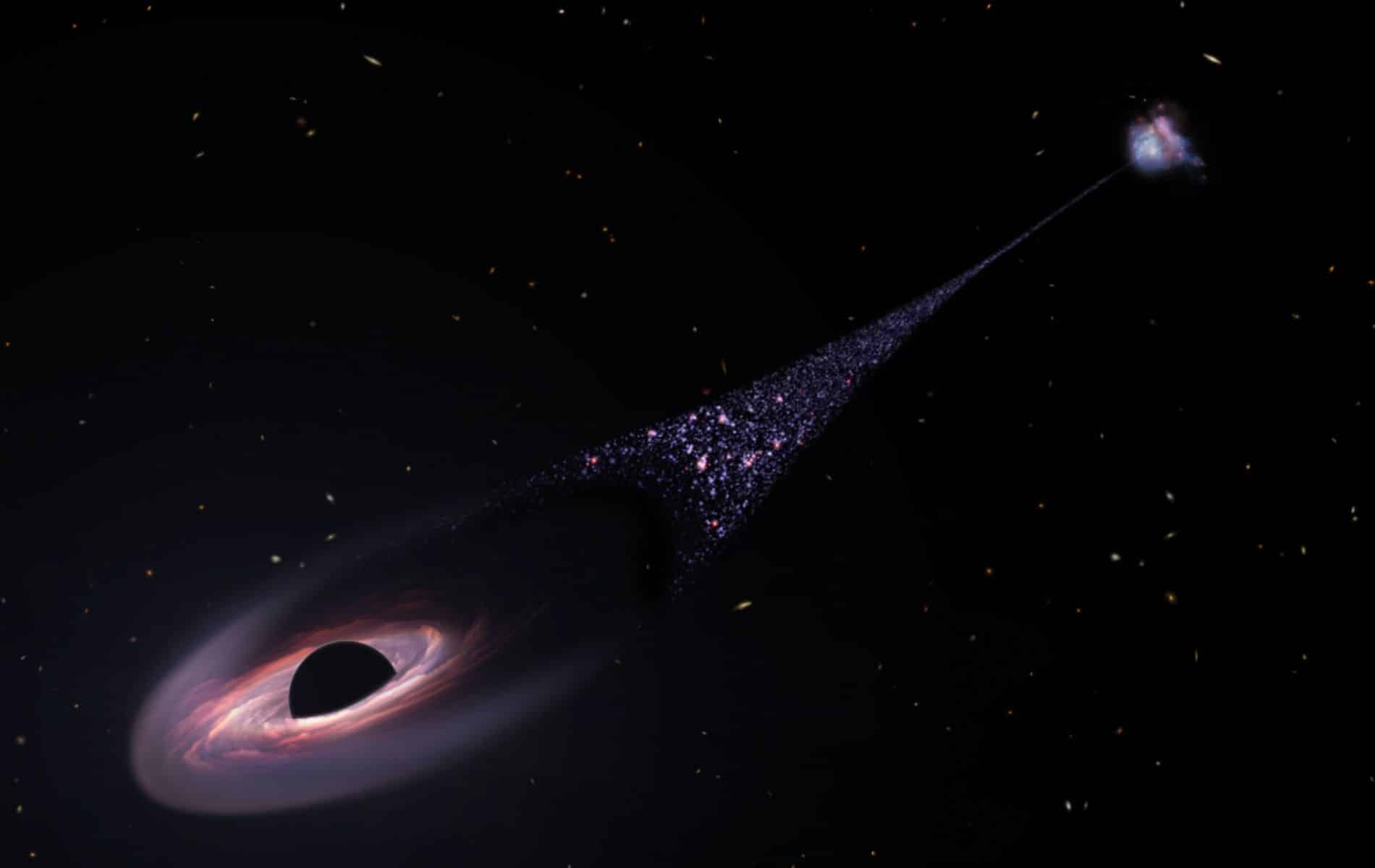It is likely the result of a massive collision of several rival supermassive black holes. And the resulting star trail, according to the researchers, is “stunning and very unusual.”
Astronomer Peter van Dokkum was studying images from the Hubble Space Telescope, searching for globular clusters in a nearby dwarf galaxy, when suddenly his eye fell on a “scratch.” “I saw a little strip in the picture,” Van Dokkum recalls. “My first thought was that maybe this was a cosmic ray. But when we filtered out the cosmic ray, the scratch was still there. It was like nothing we’d seen before.”
Star Trail
Because it was so strange, Van Dokkum and his colleagues decided to study the crazy streak of light further with the help of the Keck Observatory. And these follow-up observations show that the scratch is in fact a huge pendulum 200,000 light-years across filled with young blue stars. “This star trail is amazing, very bright, and very unusual,” says Van Dokkum.

The question is, of course, how did this tall wreath strewn with stars come to be. Researchers believe that the star’s path runs between a monstrous black hole and the galaxy from which it erupted. The black hole is likely to compress the gas, which leads to the birth of stars. Van Dokkum doubts: “We think we see beyond the black hole, where gas cools and stars form.” “What we see are the consequences. Similar to the aftermath of a ship, here we see the trail behind the black hole.” The pendulum must contain a very large number of newborn stars, since it is about half as bright as the galaxy with which it is associated.
Black hole
In short, the black hole, with a mass of 20 million suns, has left a stellar trail 200,000 light-years across, twice the diameter of our Milky Way galaxy. It’s a strange sight. Black holes are generally known as voracious eaters, stuffing themselves with gas, dust, and whatever is within their reach. But instead of swallowing stars like the cosmic Pac-Man, the black hole actually creates stars. The black hole is in a hurry, it doesn’t even have time to have a snack. Nothing like it has ever been seen in the universe.
Galaxy billiards
How did this strange scene happen? Researchers think this is likely the result of an extremely rare and bizarre game of “galactic billiards” between three colliding supermassive black holes. The theory says that the first two galaxies merged about 50 million years ago. This clumped the black holes from these galaxies together, causing them to orbit each other. Then a third supermassive black hole galaxy appeared on the scene. And as we all know, “two are a company, three are a crowd.”

lying away
A chaotic and unstable situation ensued. One of the black holes was lost and exited directly from the host galaxy. The original binary pair may have survived as is, or the intruder may have replaced one of the other black holes and ejected its former companion. When the ejected black hole flew in one direction, the other two flew in the opposite direction. This brings us back to the beginning.
Continue searching
The discovery of an ejected black hole creating a cascade of stars is extraordinary. So the researchers haven’t left the topic yet. Follow-up observations using the James Webb Space Telescope and the Chandra X-ray Observatory have already begun, in order to confirm or disprove the theory about the black hole.
In addition, the search for other strange “scratches” continues. Hopes are pinned for NASA’s upcoming Nancy Grace Romanian Space Telescope. Researchers hope that more rare “star streaks” will appear on these images, which will help us learn more about these strange phenomena.

“Total coffee specialist. Hardcore reader. Incurable music scholar. Web guru. Freelance troublemaker. Problem solver. Travel trailblazer.”







More Stories
GALA lacks a chapter on e-health
Weird beer can taste really good.
Planets contain much more water than previously thought